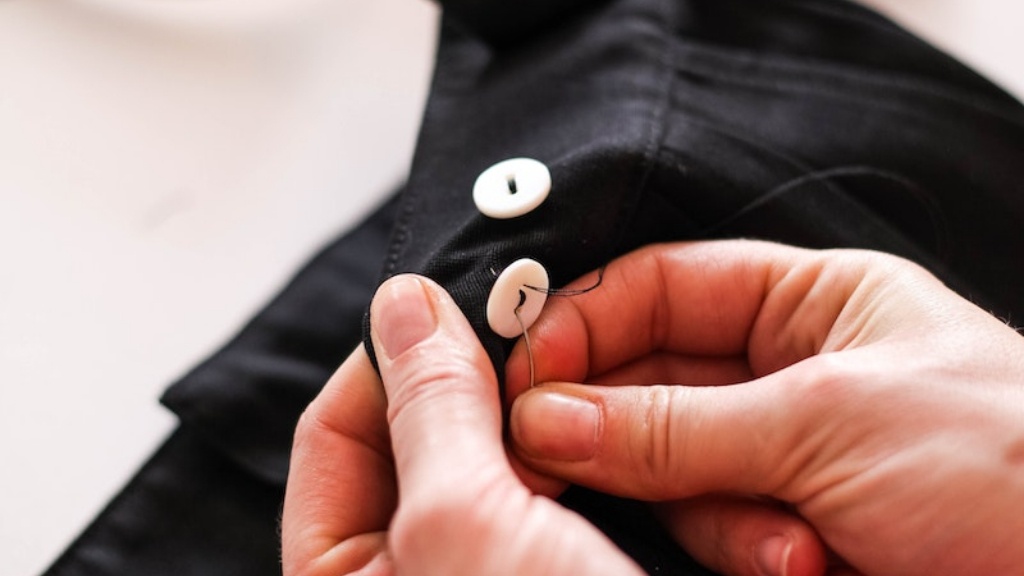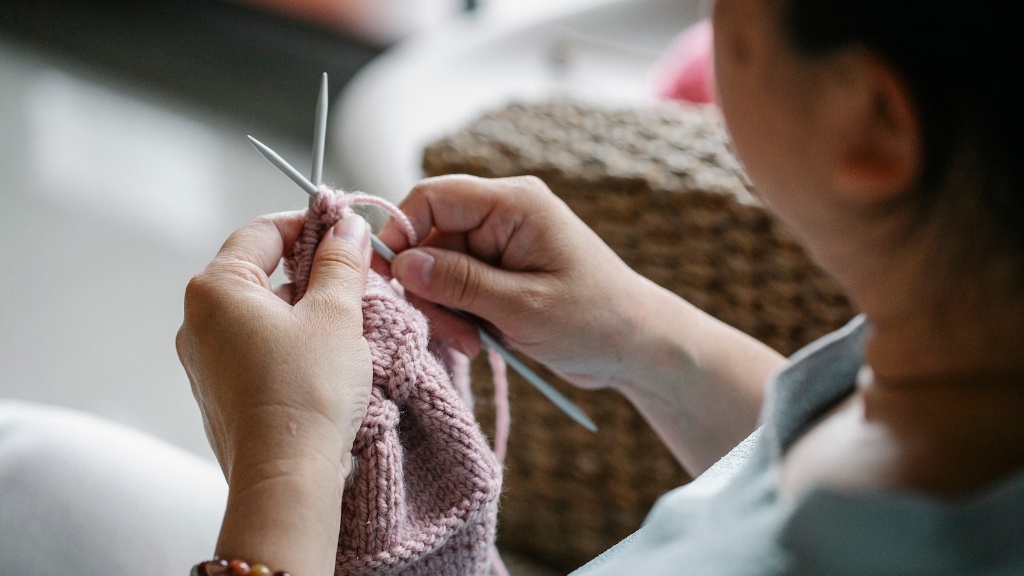What is a Serger Sewing Machine?
A serger sewing machine, also known as an ‘overlock’ machine, is a unique type of sewing machine that is well-suited for sewing together multiple layers of fabric quickly and professionally. Sergers are sometimes referred to as ‘finishing machines’, as they finish the raw edges of multiple pieces of fabric. This type of machine tends to be more expensive than regular sewing machines and is more of an investment.
Sergers are designed to use multiple threads to create a strengthened seam that is highly durable and can handle thicker fabrics, such as denim or canvas, as well as multiple layers of fabric. Not only do sergers add strength to a seam, they also offer decorative stitching options, like zigzag stitching, which is popular for creating ruffles or gathering.
In addition to strength, sergers offer professional-level speed which makes them perfect for large-scale garment production. It is not uncommon for professional tailors and designers to use multiple sergers at once in order to keep up with the demand for their work.
Sergers are known for their ability to quickly and cleanly bind fabric along the edge and prevent fraying. A serger is able to create a seam with an overlock stitch which is a combination of both a straight and a zig-zag stitch. It is this type of seam that is most often used in clothing and home decor projects.
What Can You Do With a Serger Sewing Machine?
Sergers can be used for all kinds of sewing projects, from hemming and binding edges to creating professional-looking curtains and pillows. Sergers can also be a great aid in quilting projects, allowing you to sew multiple layers at once.
Sergers are also great for creating lingerie and swimsuits as they offer added strength to the seams and can handle thicker fabrics. The overlock stitching also adds a professional-looking finish to these kinds of garments.
Sergers are also popular for altering or repairing clothing. For example, if a shirt sleeve is too long, a serger can quickly and easily remove the extra fabric, adding a smart finish to the new hem.
As well as being ideal for constructing clothing and other items where seams need to be bound, sergers can also be used for free-motion embroidery. This requires lowering the feed dogs to allow fabric to be moved freely over the surface of the machine. Not all sergers are capable of this so it’s important to double check compatibility before purchasing.
What to Consider Before Buying a Serger Sewing Machine
Portability and weight should be considered when looking for a serger sewing machine. Most sergers are made with heavier parts which means they are not as easily transportable as regular sewing machines. Be sure to choose a model that you can comfortably move around as required.
It is also important to consider the features that you need from a serger. Sergers come in a variety of shapes and sizes with different features, from 2-4 thread options to the ability to add decorative stitches. It’s important to know what type of fabric, thread and features you need for your projects and to research models that fit your requirements.
For those just starting out with serger sewing, a 4-thread model is usually an ideal choice. This option offers strength and a simple, neat edge finish which is perfect for beginners. It is also relatively more affordable than a more advanced serger model.
If cost is an issue, a used serger sewing machine can be a great way to get into serger sewing. It is possible to find good quality machines second hand and they can offer all the same features as a new machine. But be sure to check out any used machine carefully before buying as it could have parts that need replacing.
Different Types of Threads Used on Serger Sewing Machine
A serger sewing machine uses cone threads for overlock stitching, which are available in various thicknesses. Generally speaking, lighter weights are better for light and sheer fabrics, while the heavyweight threads are for thicker materials like denim. You’ll also need to consider the colour of the thread, as this will be visible on the finished product.
The majority of sergers use two or four threads, with a much larger range of colours to choose from. Some sergers also have the option of using both regular and specialty threads, as well as decorative threads. Specialty threads include metallic, glitter, holographic and stretch thread, which are perfect for incorporating in a decorative seam.
The amount of thread you need will depend on the project. Generally speaking, more thread is required for thicker fabrics, while less thread is needed for thinner fabrics. It is also important to remember to regularly oil the machine and always change needles when they become blunt.
Advantages and Disadvantages of Owning a Serger Sewing Machine
Although a serger sewing machine is a great addition to any sewing enthusiast’s collection, there are some drawbacks which should be considered before making a purchase.
The biggest advantage of owning a serger sewing machine is the professional finish it offers. Edges are neat, seams are strong and decorative features can be added with ease. It is also much faster than hand-sewing and is perfect for large-scale production.
The biggest disadvantage is that sergers can be an expensive investment and while they may be able to do a lot of work, they are more limited than standard sewing machines. Sergers also have less stitch options, are more difficult to operate and take up more space than a regular machine.
Finally, a serger will require more maintenance than a regular sewing machine. It is important to regularly oil and lubricate the machine and to regularly check tension and stitch length.
Important Safety Tips to Follow When Using a Serger Sewing Machine
Sergers are powerful machines, so it is important to exercise caution when working with them. Here are some tips to help ensure a safe sewing experience:
Always wear safety glasses when using a serger. This will help to protect your eyes from any flying bits of thread or fabric.
Never leave your serger unattended when it is running. This can be very dangerous, as the machine can easily malfunction and cause injuries.
Be sure to always unplug the serger when not in use and when changing needles. Also be sure to wipe away any oil or lubricant spills immediately.
It is also important to choose a well-lit area to work in and to use good scissors when cutting fabric as this will reduce the risk of injury. Keep in mind that it is not advised to use wire cutters, as they can easily damage the material.
It is also important to always read the user manual carefully before using the machine. This way you can avoid common mistakes that could damage the machine or cause other issues.
Essential Sewing Supplies for Serger Sewing
As with any sewing project, there are certain supplies that all sewers need. When it comes to serger sewing, there are a few extra tools and supplies which are invaluable. Here are the essential items that all serger sewers should have:
The first and most important item is needles. Serger needles come in a variety of sizes and types, so be sure to read the user manual carefully to know which ones are suitable and what size is right for your type of fabric.
The thread is also important as it needs to be strong enough to withstand the tension of the serger sewing machine. Medium or heavyweight threads are ideal for most serger projects.
Finally, it is important to have the right supplies for adjusting the tension and stitch length. This is crucial for getting a professional finish and making sure that the stitches don’t pull too tight or too loose.
How to Take Care of a Serger Sewing Machine
Like any other sewing machine, a serger needs to be properly maintained in order to work properly. This means regularly oiling and lubricating the machine, as well as keeping it clean and dust-free. It is also important to periodically check the tension and stitch length.
One of the biggest issues with sergers is lint build up. It is important to keep an eye on the lint collector and make sure to empty it regularly. It is also a good idea to use a soft brush to clean out lint from the area around the needle plate every few months.
Finally, it is important to check that all parts are in good working order, such as the needle, presser foot and feed dogs. If any of these parts are loose or damaged, be sure to replace them as soon as possible.
Benefits of Using a Serger Sewing Machine
Using a serger sewing machine offers a number of great benefits. Not only is the machine capable of producing professional-looking hems and seams, it is also very fast and perfect for those who need to make large batches of clothes or accessories in a short amount of time.
In addition to its speed and professional finish, a serger also offers much more flexibility when it comes to sewing various types of fabrics. It can be used for thicker and heavier fabrics, such as denim or canvas, as well as light and sheer fabrics. This makes it a great tool to have in any sewers collection.
Finally, sergers are also great if you want to add decorative stitching to your projects. The decorative stitching options available make it easy to create unique and eye-catching designs.





